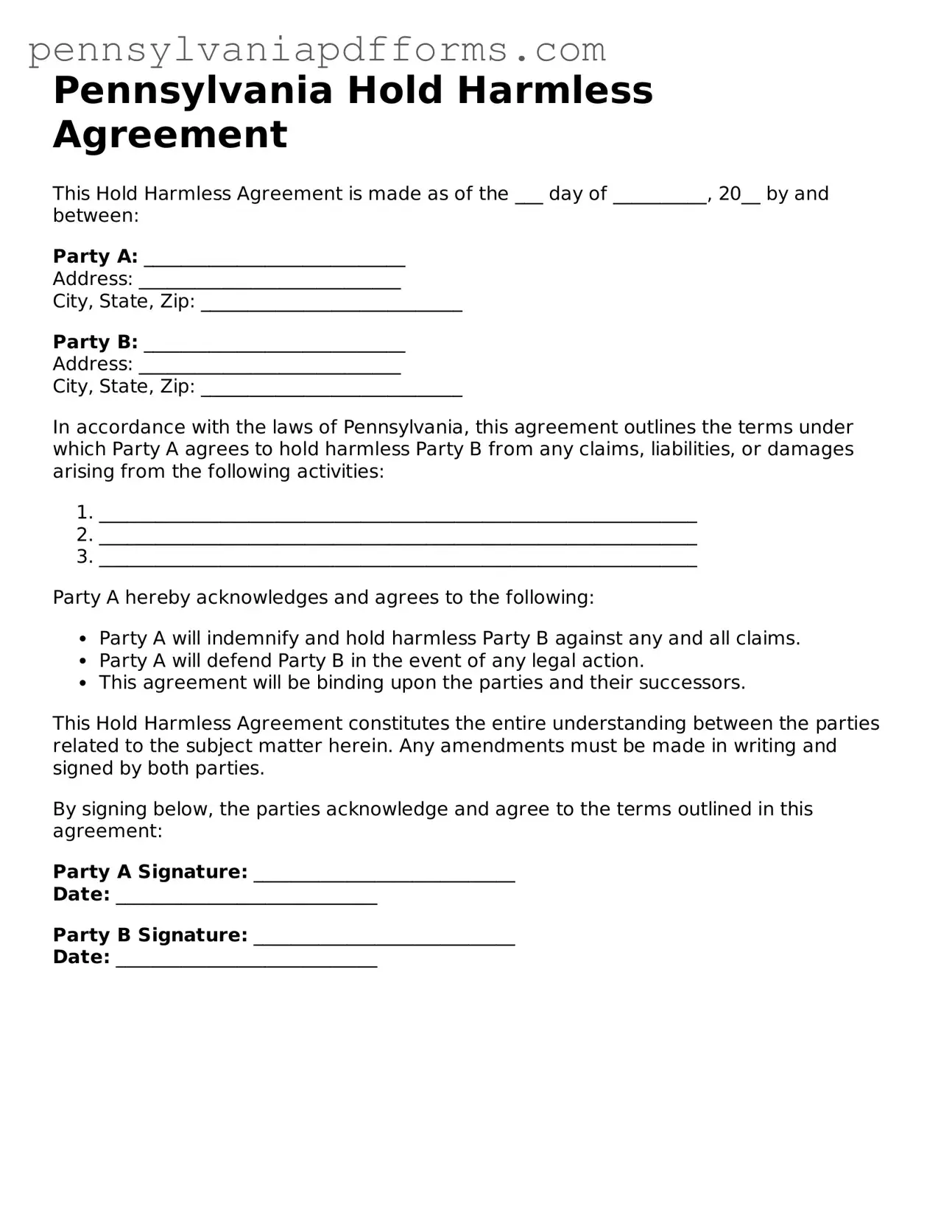Pennsylvania Hold Harmless Agreement
This Hold Harmless Agreement is made as of the ___ day of __________, 20__ by and between:
Party A: ____________________________
Address: ____________________________
City, State, Zip: ____________________________
Party B: ____________________________
Address: ____________________________
City, State, Zip: ____________________________
In accordance with the laws of Pennsylvania, this agreement outlines the terms under which Party A agrees to hold harmless Party B from any claims, liabilities, or damages arising from the following activities:
- ________________________________________________________________
- ________________________________________________________________
- ________________________________________________________________
Party A hereby acknowledges and agrees to the following:
- Party A will indemnify and hold harmless Party B against any and all claims.
- Party A will defend Party B in the event of any legal action.
- This agreement will be binding upon the parties and their successors.
This Hold Harmless Agreement constitutes the entire understanding between the parties related to the subject matter herein. Any amendments must be made in writing and signed by both parties.
By signing below, the parties acknowledge and agree to the terms outlined in this agreement:
Party A Signature: ____________________________
Date: ____________________________
Party B Signature: ____________________________
Date: ____________________________
